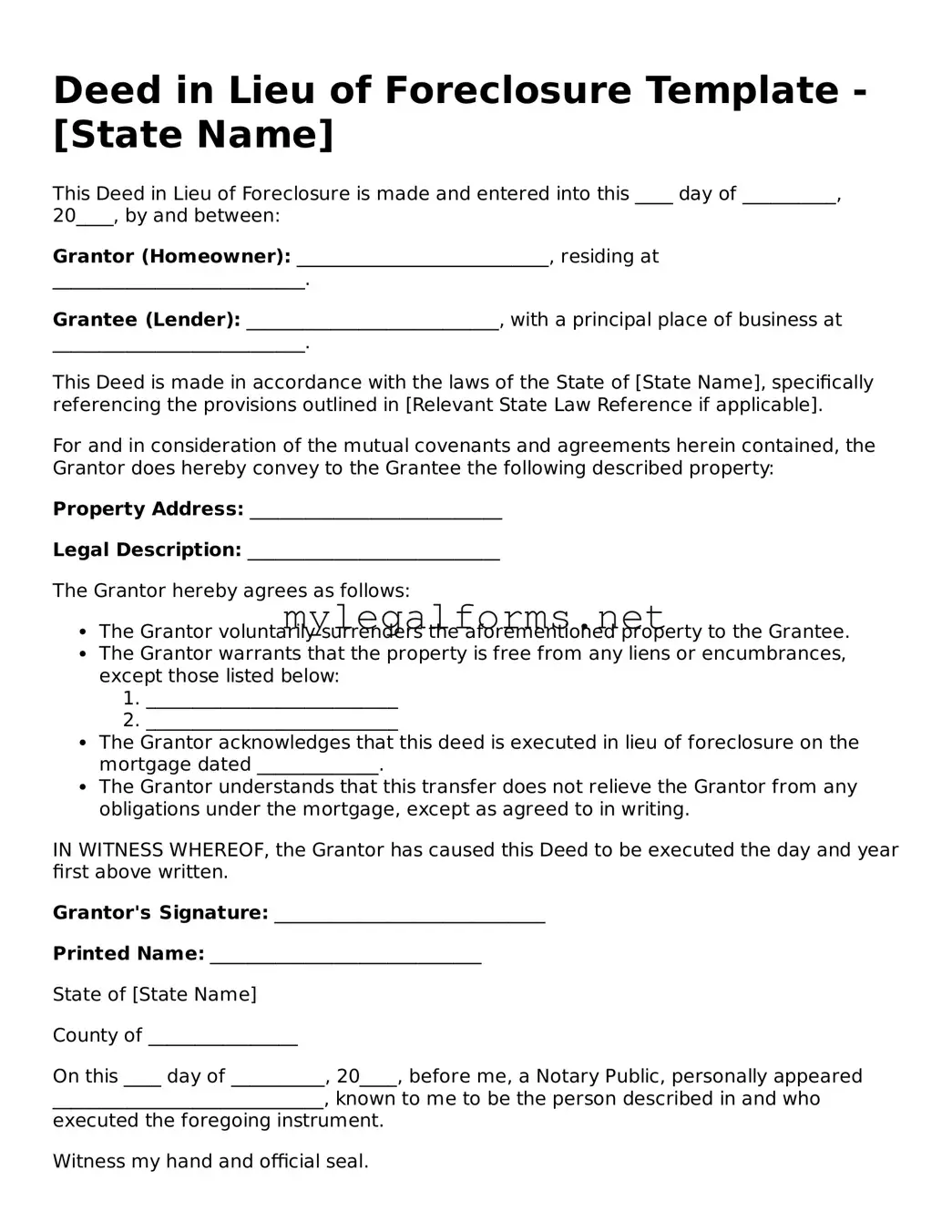Deed in Lieu of Foreclosure Template - [State Name]
This Deed in Lieu of Foreclosure is made and entered into this ____ day of __________, 20____, by and between:
Grantor (Homeowner): ___________________________, residing at ___________________________.
Grantee (Lender): ___________________________, with a principal place of business at ___________________________.
This Deed is made in accordance with the laws of the State of [State Name], specifically referencing the provisions outlined in [Relevant State Law Reference if applicable].
For and in consideration of the mutual covenants and agreements herein contained, the Grantor does hereby convey to the Grantee the following described property:
Property Address: ___________________________
Legal Description: ___________________________
The Grantor hereby agrees as follows:
- The Grantor voluntarily surrenders the aforementioned property to the Grantee.
- The Grantor warrants that the property is free from any liens or encumbrances, except those listed below:
- ___________________________
- ___________________________
- The Grantor acknowledges that this deed is executed in lieu of foreclosure on the mortgage dated _____________.
- The Grantor understands that this transfer does not relieve the Grantor from any obligations under the mortgage, except as agreed to in writing.
IN WITNESS WHEREOF, the Grantor has caused this Deed to be executed the day and year first above written.
Grantor's Signature: _____________________________
Printed Name: _____________________________
State of [State Name]
County of ________________
On this ____ day of __________, 20____, before me, a Notary Public, personally appeared _____________________________, known to me to be the person described in and who executed the foregoing instrument.
Witness my hand and official seal.
_____________________________________
Notary Public
My commission expires: ________________
